Analysis of Cost Reduction Techniques: Job and Activity-Based Costing
VerifiedAdded on 2021/02/19
|6
|950
|61
Homework Assignment
AI Summary
This assignment solution focuses on cost reduction strategies within a business context. It begins with the calculation of job costs, detailing direct and indirect costs, and presents two options for budgeting, considering direct labor and overheads. The solution then provides an in-depth explanatio...
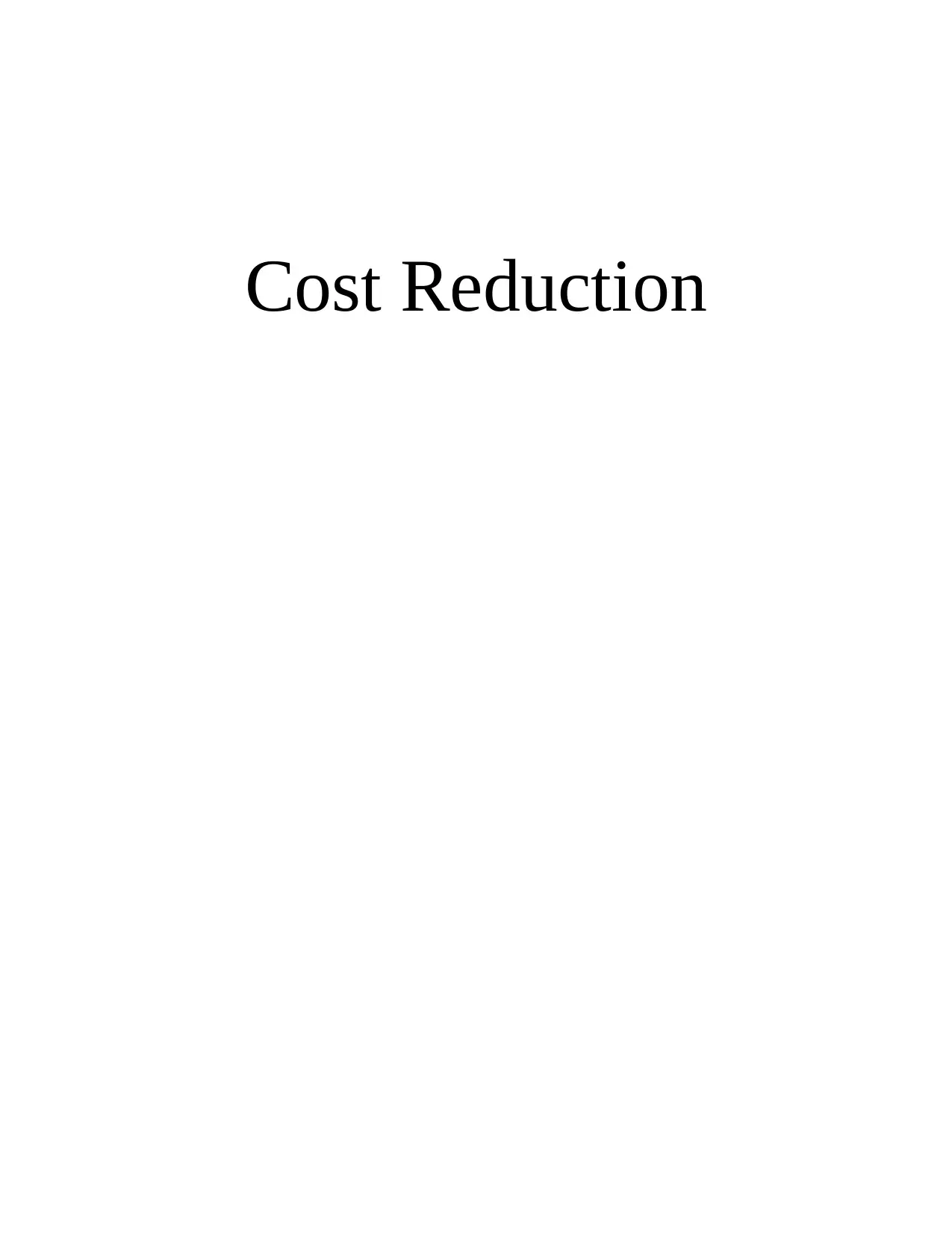
Cost Reduction
Paraphrase This Document
Need a fresh take? Get an instant paraphrase of this document with our AI Paraphraser
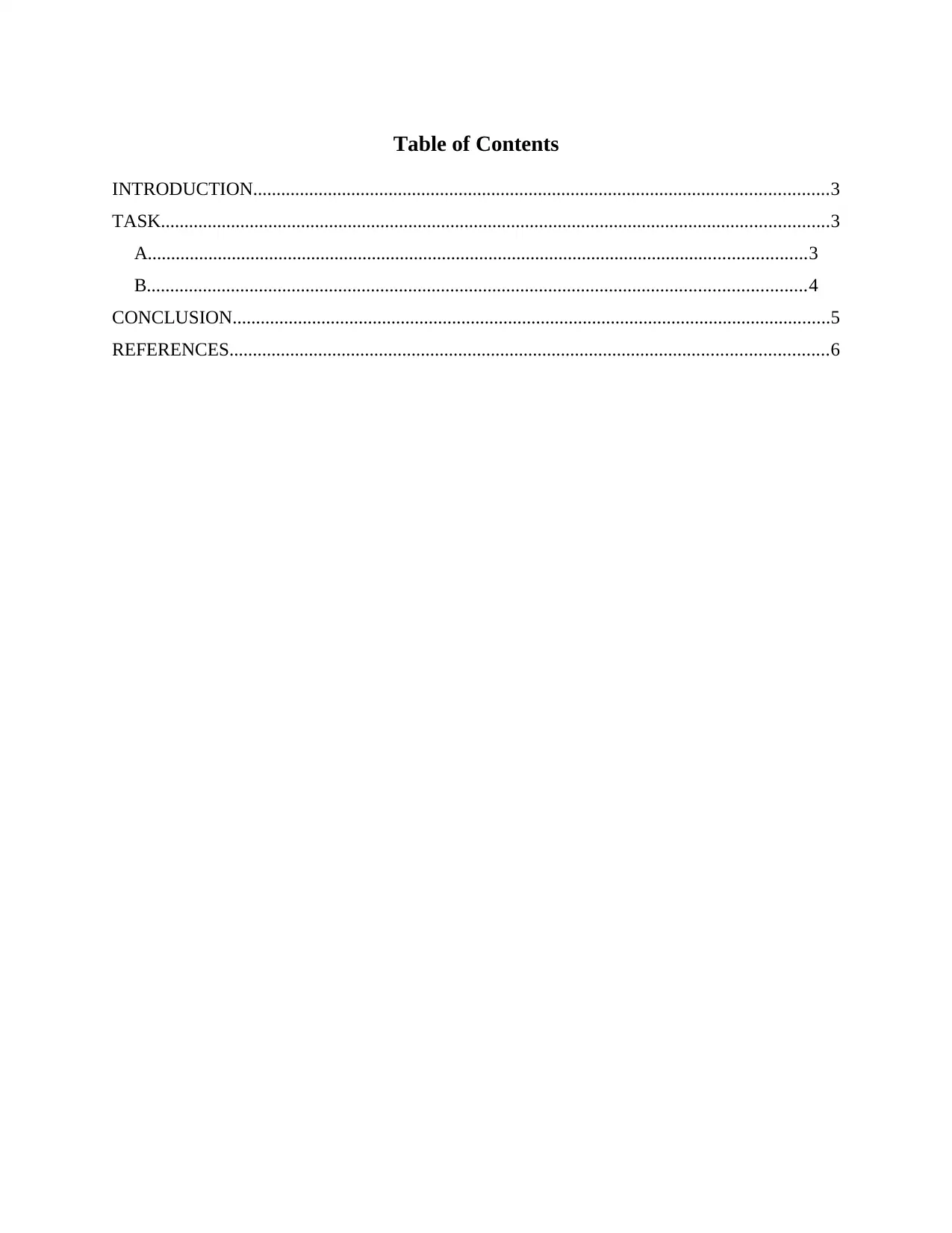
Table of Contents
INTRODUCTION...........................................................................................................................3
TASK...............................................................................................................................................3
A.............................................................................................................................................3
B.............................................................................................................................................4
CONCLUSION................................................................................................................................5
REFERENCES................................................................................................................................6
INTRODUCTION...........................................................................................................................3
TASK...............................................................................................................................................3
A.............................................................................................................................................3
B.............................................................................................................................................4
CONCLUSION................................................................................................................................5
REFERENCES................................................................................................................................6
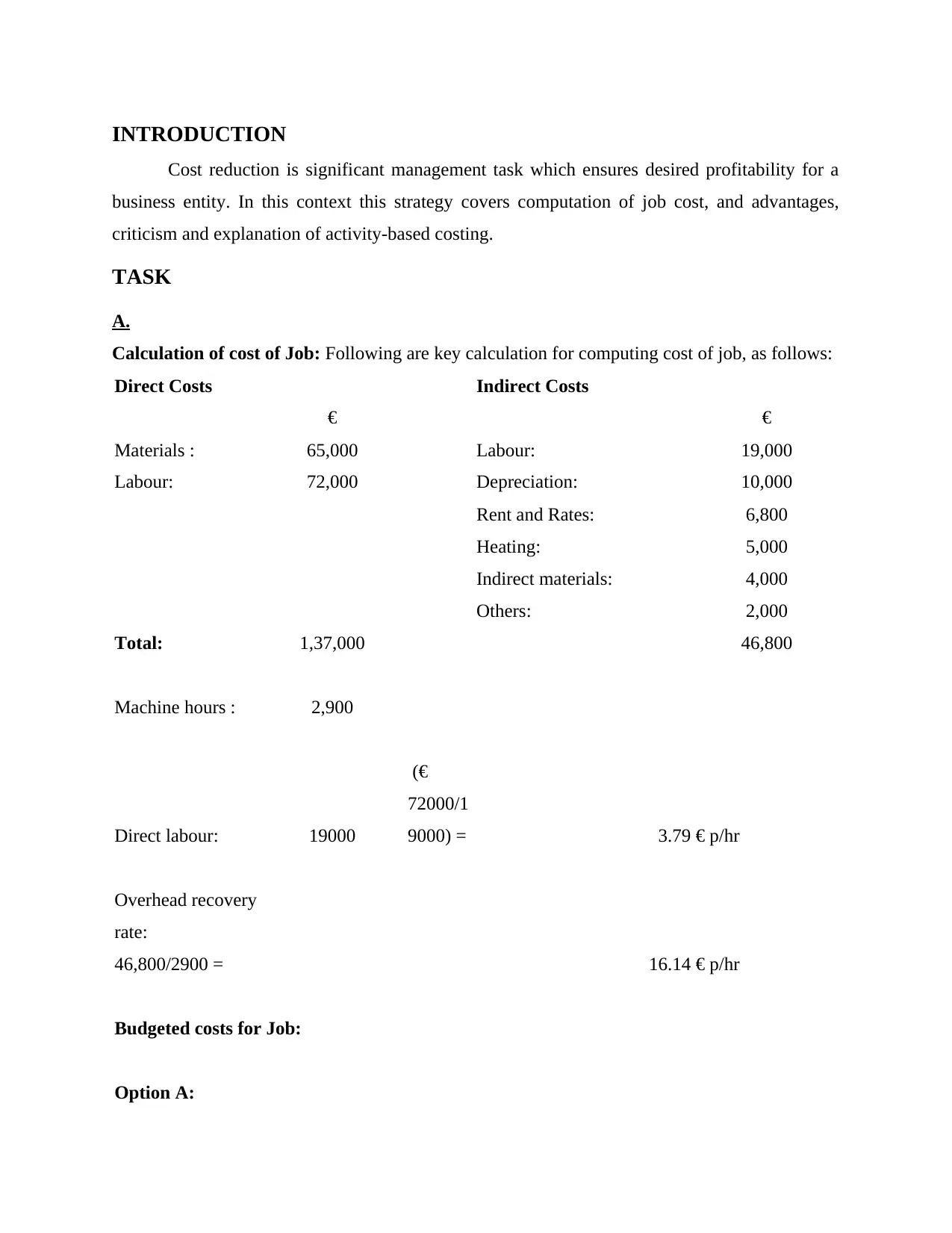
INTRODUCTION
Cost reduction is significant management task which ensures desired profitability for a
business entity. In this context this strategy covers computation of job cost, and advantages,
criticism and explanation of activity-based costing.
TASK
A.
Calculation of cost of Job: Following are key calculation for computing cost of job, as follows:
Direct Costs Indirect Costs
€ €
Materials : 65,000 Labour: 19,000
Labour: 72,000 Depreciation: 10,000
Rent and Rates: 6,800
Heating: 5,000
Indirect materials: 4,000
Others: 2,000
Total: 1,37,000 46,800
Machine hours : 2,900
Direct labour: 19000
(€
72000/1
9000) = 3.79 € p/hr
Overhead recovery
rate:
46,800/2900 = 16.14 € p/hr
Budgeted costs for Job:
Option A:
Cost reduction is significant management task which ensures desired profitability for a
business entity. In this context this strategy covers computation of job cost, and advantages,
criticism and explanation of activity-based costing.
TASK
A.
Calculation of cost of Job: Following are key calculation for computing cost of job, as follows:
Direct Costs Indirect Costs
€ €
Materials : 65,000 Labour: 19,000
Labour: 72,000 Depreciation: 10,000
Rent and Rates: 6,800
Heating: 5,000
Indirect materials: 4,000
Others: 2,000
Total: 1,37,000 46,800
Machine hours : 2,900
Direct labour: 19000
(€
72000/1
9000) = 3.79 € p/hr
Overhead recovery
rate:
46,800/2900 = 16.14 € p/hr
Budgeted costs for Job:
Option A:
You're viewing a preview
Unlock full access by subscribing today!
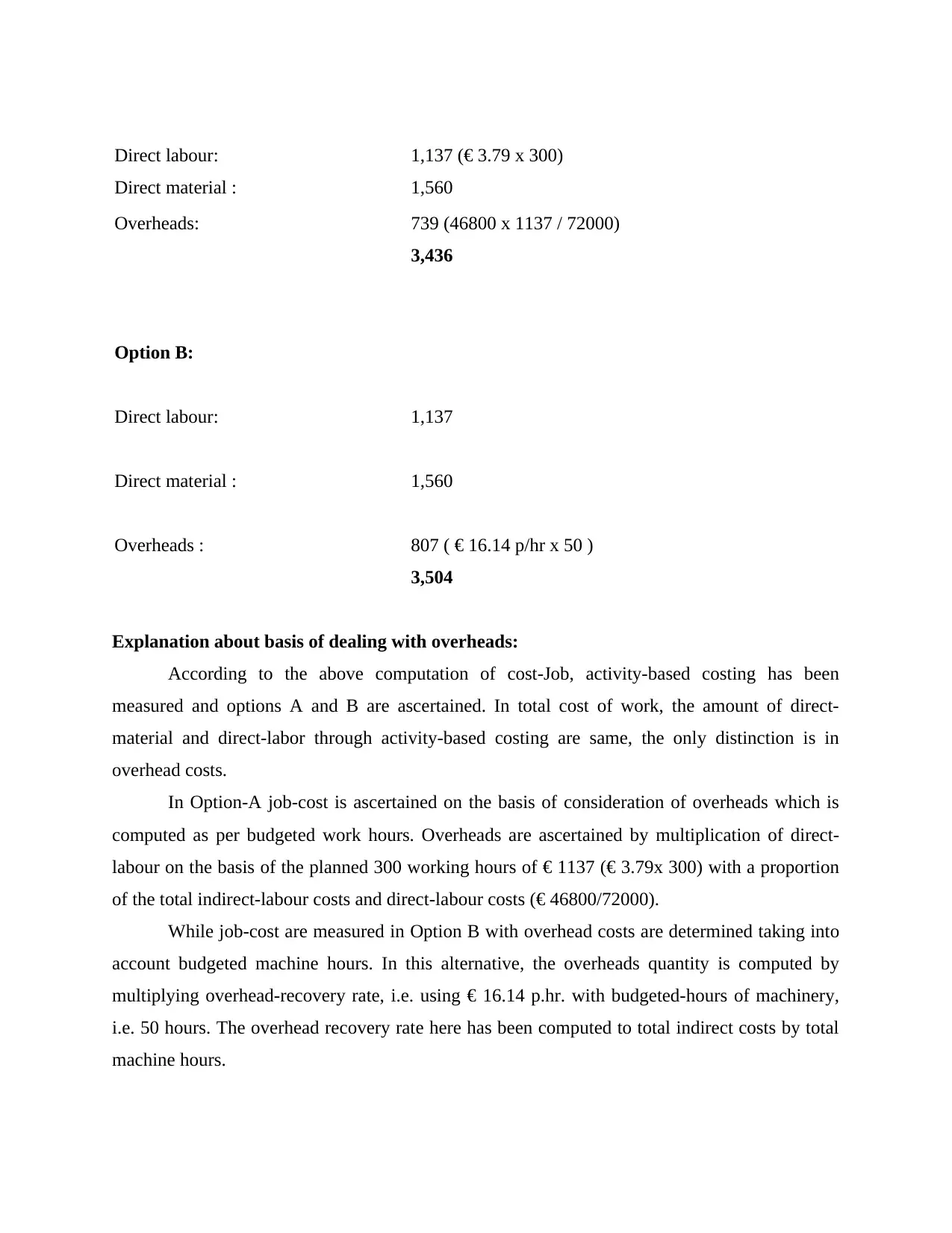
Direct labour: 1,137 (€ 3.79 x 300)
Direct material : 1,560
Overheads: 739 (46800 x 1137 / 72000)
3,436
Option B:
Direct labour: 1,137
Direct material : 1,560
Overheads : 807 ( € 16.14 p/hr x 50 )
3,504
Explanation about basis of dealing with overheads:
According to the above computation of cost-Job, activity-based costing has been
measured and options A and B are ascertained. In total cost of work, the amount of direct-
material and direct-labor through activity-based costing are same, the only distinction is in
overhead costs.
In Option-A job-cost is ascertained on the basis of consideration of overheads which is
computed as per budgeted work hours. Overheads are ascertained by multiplication of direct-
labour on the basis of the planned 300 working hours of € 1137 (€ 3.79x 300) with a proportion
of the total indirect-labour costs and direct-labour costs (€ 46800/72000).
While job-cost are measured in Option B with overhead costs are determined taking into
account budgeted machine hours. In this alternative, the overheads quantity is computed by
multiplying overhead-recovery rate, i.e. using € 16.14 p.hr. with budgeted-hours of machinery,
i.e. 50 hours. The overhead recovery rate here has been computed to total indirect costs by total
machine hours.
Direct material : 1,560
Overheads: 739 (46800 x 1137 / 72000)
3,436
Option B:
Direct labour: 1,137
Direct material : 1,560
Overheads : 807 ( € 16.14 p/hr x 50 )
3,504
Explanation about basis of dealing with overheads:
According to the above computation of cost-Job, activity-based costing has been
measured and options A and B are ascertained. In total cost of work, the amount of direct-
material and direct-labor through activity-based costing are same, the only distinction is in
overhead costs.
In Option-A job-cost is ascertained on the basis of consideration of overheads which is
computed as per budgeted work hours. Overheads are ascertained by multiplication of direct-
labour on the basis of the planned 300 working hours of € 1137 (€ 3.79x 300) with a proportion
of the total indirect-labour costs and direct-labour costs (€ 46800/72000).
While job-cost are measured in Option B with overhead costs are determined taking into
account budgeted machine hours. In this alternative, the overheads quantity is computed by
multiplying overhead-recovery rate, i.e. using € 16.14 p.hr. with budgeted-hours of machinery,
i.e. 50 hours. The overhead recovery rate here has been computed to total indirect costs by total
machine hours.
Paraphrase This Document
Need a fresh take? Get an instant paraphrase of this document with our AI Paraphraser
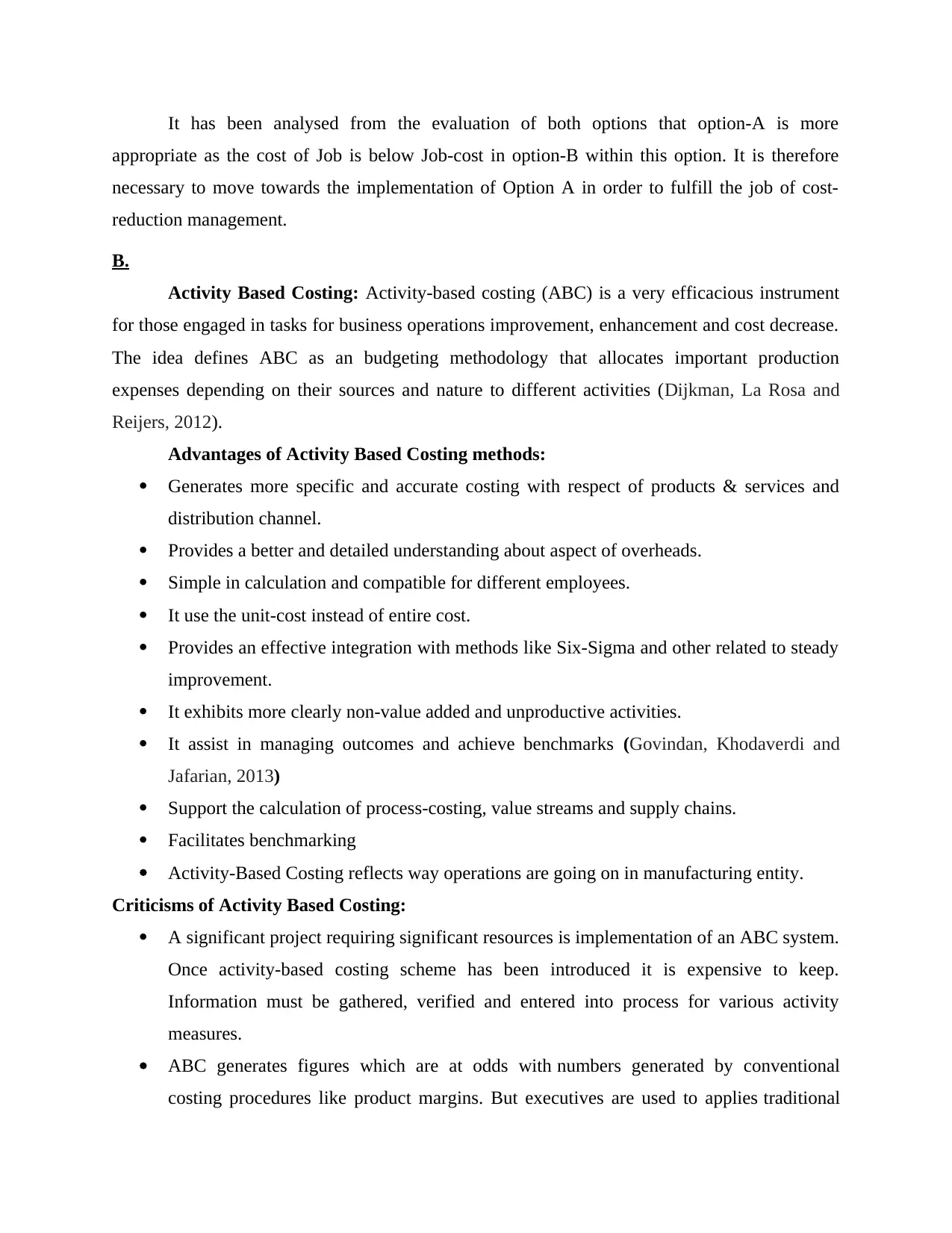
It has been analysed from the evaluation of both options that option-A is more
appropriate as the cost of Job is below Job-cost in option-B within this option. It is therefore
necessary to move towards the implementation of Option A in order to fulfill the job of cost-
reduction management.
B.
Activity Based Costing: Activity-based costing (ABC) is a very efficacious instrument
for those engaged in tasks for business operations improvement, enhancement and cost decrease.
The idea defines ABC as an budgeting methodology that allocates important production
expenses depending on their sources and nature to different activities (Dijkman, La Rosa and
Reijers, 2012).
Advantages of Activity Based Costing methods:
Generates more specific and accurate costing with respect of products & services and
distribution channel.
Provides a better and detailed understanding about aspect of overheads.
Simple in calculation and compatible for different employees.
It use the unit-cost instead of entire cost.
Provides an effective integration with methods like Six-Sigma and other related to steady
improvement.
It exhibits more clearly non-value added and unproductive activities.
It assist in managing outcomes and achieve benchmarks (Govindan, Khodaverdi and
Jafarian, 2013)
Support the calculation of process-costing, value streams and supply chains.
Facilitates benchmarking
Activity-Based Costing reflects way operations are going on in manufacturing entity.
Criticisms of Activity Based Costing:
A significant project requiring significant resources is implementation of an ABC system.
Once activity-based costing scheme has been introduced it is expensive to keep.
Information must be gathered, verified and entered into process for various activity
measures.
ABC generates figures which are at odds with numbers generated by conventional
costing procedures like product margins. But executives are used to applies traditional
appropriate as the cost of Job is below Job-cost in option-B within this option. It is therefore
necessary to move towards the implementation of Option A in order to fulfill the job of cost-
reduction management.
B.
Activity Based Costing: Activity-based costing (ABC) is a very efficacious instrument
for those engaged in tasks for business operations improvement, enhancement and cost decrease.
The idea defines ABC as an budgeting methodology that allocates important production
expenses depending on their sources and nature to different activities (Dijkman, La Rosa and
Reijers, 2012).
Advantages of Activity Based Costing methods:
Generates more specific and accurate costing with respect of products & services and
distribution channel.
Provides a better and detailed understanding about aspect of overheads.
Simple in calculation and compatible for different employees.
It use the unit-cost instead of entire cost.
Provides an effective integration with methods like Six-Sigma and other related to steady
improvement.
It exhibits more clearly non-value added and unproductive activities.
It assist in managing outcomes and achieve benchmarks (Govindan, Khodaverdi and
Jafarian, 2013)
Support the calculation of process-costing, value streams and supply chains.
Facilitates benchmarking
Activity-Based Costing reflects way operations are going on in manufacturing entity.
Criticisms of Activity Based Costing:
A significant project requiring significant resources is implementation of an ABC system.
Once activity-based costing scheme has been introduced it is expensive to keep.
Information must be gathered, verified and entered into process for various activity
measures.
ABC generates figures which are at odds with numbers generated by conventional
costing procedures like product margins. But executives are used to applies traditional
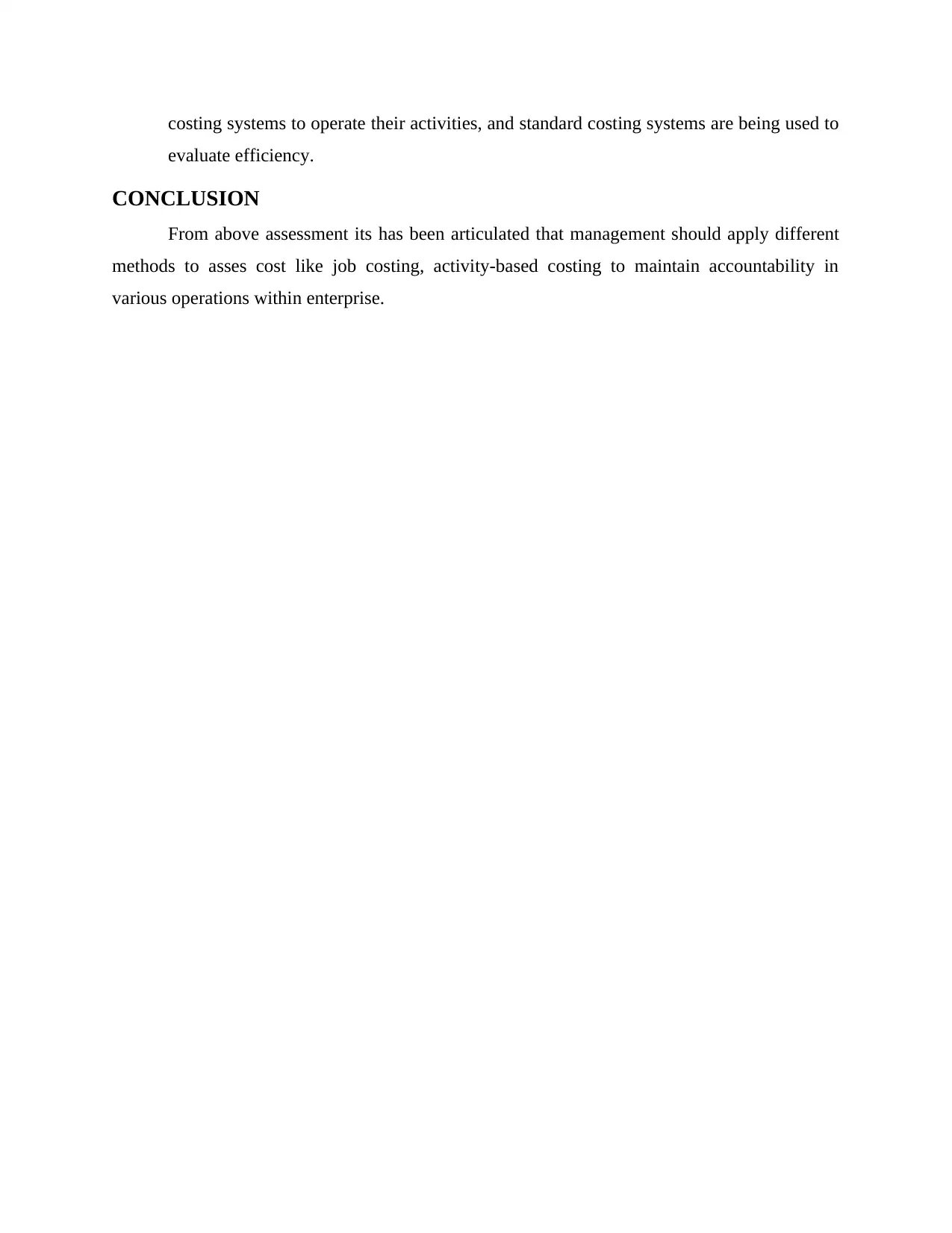
costing systems to operate their activities, and standard costing systems are being used to
evaluate efficiency.
CONCLUSION
From above assessment its has been articulated that management should apply different
methods to asses cost like job costing, activity-based costing to maintain accountability in
various operations within enterprise.
evaluate efficiency.
CONCLUSION
From above assessment its has been articulated that management should apply different
methods to asses cost like job costing, activity-based costing to maintain accountability in
various operations within enterprise.
You're viewing a preview
Unlock full access by subscribing today!
1 out of 6
Your All-in-One AI-Powered Toolkit for Academic Success.
+13062052269
info@desklib.com
Available 24*7 on WhatsApp / Email
![[object Object]](/_next/static/media/star-bottom.7253800d.svg)
Unlock your academic potential
© 2024 | Zucol Services PVT LTD | All rights reserved.

